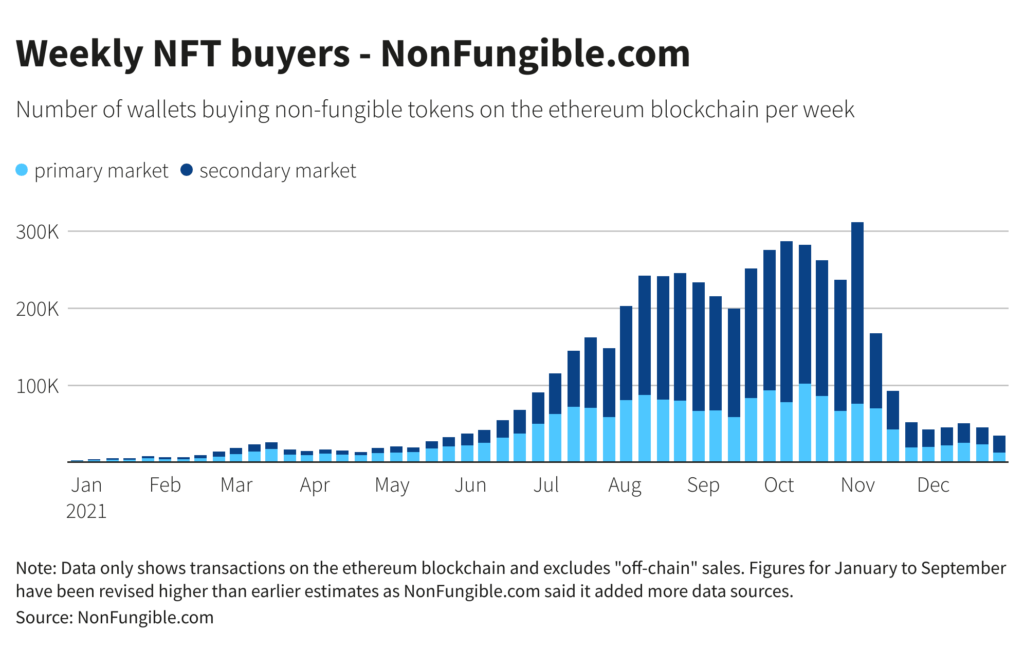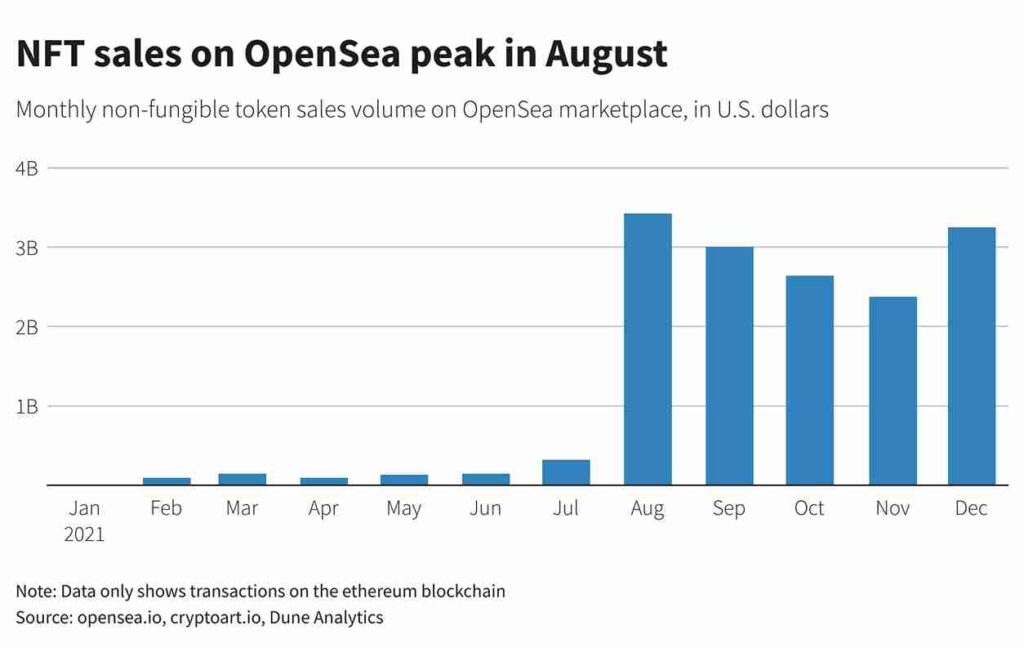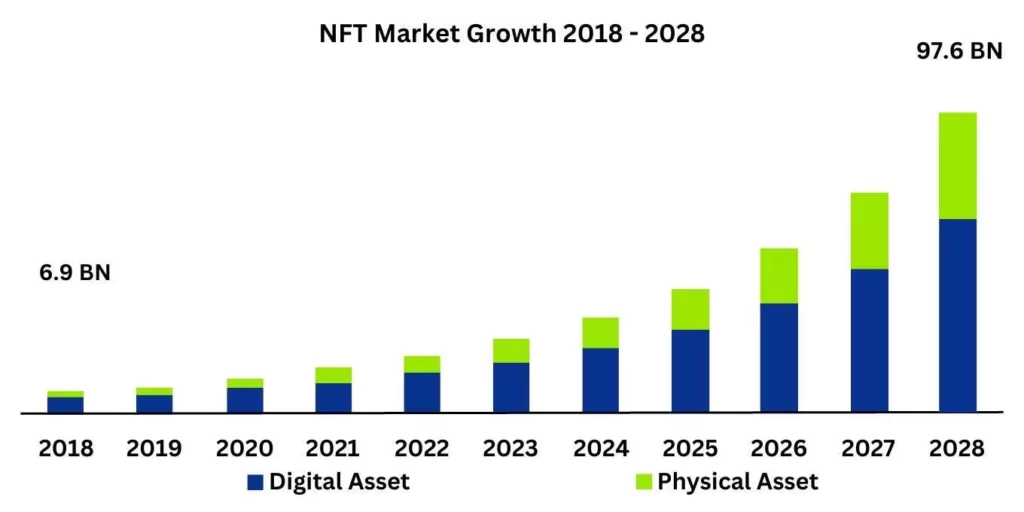Get to understand other related concepts, their advantages together with disadvantages of custodial vs non-custodial NFT marketplaces and wallets. The article is well supported with informed data concerning challenges related to security and regulated processes.
- Introduction to Custodial vs non-custodial NFT Marketplaces and wallets
- Custodial NFT Marketplaces and Wallets
- Non-custodial NFT Marketplaces and Wallets
- Understanding Digital Wallets
- Key Differences to Consider
- Choosing the Right Platform
- Considerations for Users
- Conclusion
The article explains some of the difference between custodial and non-custodial, creating a vivid relation between marketplaces and wallets. While considering a marketplace or a wallet you must look for the advantages of using Custodial solutions and user control, security, and decentralization in non-custodial solutions.
However, there are additional elements that one should always consider before making any move, elements as security, user-friendliness, and ethical concerns. All these concepts are well elaborated in the article.
Introduction to Custodial vs non-custodial NFT Marketplaces and wallets
The market of NFTs (Non-Fungible Tokens) is growing wildly, however, it is important to see the difference between custodial and non-custodial platforms. The platform and wallet also trade NFTs, but they display various attributes relating to this matter.
Twitter has some more additional information on the custodial and non-custodial NFT marketplaces
Custodial NFT Marketplaces and Wallets
Custodial platforms use a central model that users trust with their assets. Through such platforms, a user needs to create an account and deposit their NFTs for custody by the platform.
Key Traits of Custodial Platforms
Centralized Control
Custodial platforms consolidate the control by holding users’ private keys that are necessary to generate and manage NFTs. Users, therefore, rely on the platform to keep custody of these keys. It makes the user experience easier since the platform takes care of difficult key manager issues.
Nonetheless, this centralized control model is a double-edged sword. Though convenient, it is a way of outsourcing care for security to the platform. This exposes users to the platform blocking their assets and thus a point of single vulnerability should be created. Nonetheless, failure to keep up with standard security measures in the platform may result in the loss or theft of users’ NFTs.
User Convenience
Custodial platforms are designed to enhance convenience for the user and provide a simplified process, and a simple interface. Most of these platforms are designed with beginner-friendly functionalities that make it easy for people who may not have an understanding of managing private keys or navigating through blockchain technology.

Consequently, it is this degree of convenience that draws beginners in NFT’s marketplace as well as the people who wish to experiment with digital assets without any hassles. KYC makes account creation easy for users where they can easily deposit NFTs and avoid taking responsibility for their privatized keys.
Potential Risks
Although the organization of custody systems is centralized, this puts the user at risk. For such an open platform, one of the major issues when talking about security involves how well-secured their security system is, which is said to hold the private key of users. These include, among others; hacker attacks, breach of security, and open platforms”.
This could be considered as a security risk and users’ assets can be lost by them. In case any specific NDF of a vulnerable owner is accessed improperly for hacking purposes or stolen, many losses will result in different owners. Secondly, at times the site may get crash with some unexpected technical problems or even stay unworkable, making the users fail to withdraw their money.
Non-custodial NFT Marketplaces and Wallets
Nevertheless, non-custodial platforms usually follow a decentralizing principle. They execute a remote asset transfer process using their respective private keys.
Characteristics of Non-Custodial Platforms
Decentralized Nature
The last one was a decentralized model, also called the non-custodial approach, whereby users maintain their private keys without relying on intermediaries. Users have total rights over this sort of decentralization; therefore, users maintain their keys, which serve as a gateway to using NFTs.
Non-custodial platforms offer independence in that users don’t have to rely on any entity. This refers to the user’s independence when considering these aspects as non-dependence on any intermediaries and one central point for failure, or weak links with centralizing networks.

User Responsibility
In contrast, non-custodial platforms are considered to abdicate the responsibility to the users. The first wall of defense for their private keys is the users themselves. Such an aspect of user’s responsibility widely helps to maintain the safety of their possessions.
Yet, this model allows users to control over whom they permit having access to their data, while at the same time advising users on very high levels of awareness or alertness. In order not to lose, steal, or get them into the hands of unauthorized persons, the user should keep his or secure private keys. Users should take the lead here in that regard, preferably utilizing hardware wallets, offline data storage, and mnemonic phrases.
Blockchain-based Security
Nevertheless, custodial platforms play on naturally existing security mechanisms that are built into the blockchain system. Using blockchain technology, NFTs are transparent, permanent, and verify ownership. Every transaction and ownership transfer detail is stored in the blockchain, establishing irrevocable records and evidence of legitimate ownership.
Blockchain offers transparency such that users can follow up on the history of their NFTs; from how they came into being, who owned them before, and various previous transactions. Also, it maintains a trustworthy atmosphere for users by assuring them that NFTs are owned by real individuals.
In addition, there is no possible way for fraud, such as changing the ownership record since it is unalterable. The transaction is recorded in a way that it cannot be edited and consequently helps verify who owns a particular NTF.
Understanding Digital Wallets
Digital wallets are used for tracking any NFT or other kind of digital asset. There are several kinds of them such as software, hardware, and even some mobile apps that can serve as one’s wallet.
Roles of Digital Wallets
Security Hub
These types of online wallets store private keys required for the administration of NFTs. Sophisticated cryptographic protection of private keys in wallets from penetration by thieves or hackers.
Encryption Measures
The private wallet keys are highly encrypted and are fully digital which provides a high level of security. It ensures the accessibility of NFTs only to the qualified users, the ones who verify themselves under the designated keys in an appropriate manner.
Security Layers
There are various types of wallets that offer several levels of security, including password protection and even the use of fingerprint scans, so it’s challenging for someone else to log in without proper authorization.
Get a better understanding on what Crypto wallet are and how they work from the linked article here
Accessibility
Wallets with an intuitive user interface that allows them to interact on NFT platforms using whatever device they want to utilize.
Asset Management

The interface allows for viewing current NFT holdings, transaction history, and performance tracking through the wallet. The user can be able to update the value and status of their digital assets through this accessibility.
Transaction Facilitation
Users can commence transaction processes involving purchase, sell or transfer using a wallet. Such simplifies how users interact with their digital assets in NFT marketplaces or any dApps tethered to their wallets.
Different Varieties
There are various types of digital wallets which differ in their strengths of security preferences based upon a specific user’s needs.
Software Wallets
These wallets can be accessed via web browsers or applications and since they are online based. They create a simpler mode, accessible via computers and smartphones as well.
Hardware Wallets
For example, there are some private keys that are stored offline in hardware wallets and separated from any internet-enabled device. Security is increased by having people physically obtain their keys via tamper-resistant devices because it reduces vulnerabilities to online threats.
Mobile Wallets
Mobile wallets include smartphone apps that enable instant availability of NFTs on the go. They offer convenience and portability for ease of use with mobile devices, including handling the user’s property.
Key Differences to Consider
Control and Ownership
Custodial Platforms: These platforms secure users’ private keys, thus they are able to manage access to NFTS. Users trust the platform’s centralized control and surrender ownership of their keys. The custodian of assets provides limited control to the users.
Non-Custodial Platforms: On the other hand, non-custodial platforms give users full authority over private key ownership. The platform does not have any keys and thereby it gives control of them to users. Decentralized in this case means that users are independent and have total control of their NFTs.
Security
Custodial Platforms: Although custodial platforms are convenient, they pose a single risk of vulnerabilities. The platform is responsible for the security of users’ assets. On the other hand, such centralized control makes the platform vulnerable to hacking or security breaches, since there is a particular point responsible for everything.
Non-Custodial Platforms: Security is in the hands of the user at a non-custodial platform. These platforms do away with centralized control, which improves their security. However, the responsibility of guarding private keys with users minimizes the pipeline for platform-based vulnerabilities. However, this required the user to be aware of and manage his or her security, which was complex and high maintenance.
Responsibility
Custodial Platforms: On custodial platforms, users have minimal key management responsibilities. This provides simplicity for the user as the platform takes care of all technical issues. Yet, this ease of use is accompanied by the loss of control and responsibility on the part of users for their keys.
Non-Custodial Platforms: Nonetheless, in non-custodial platforms, it is the users who take charge of their private keys. Users must be diligent in responsibly harboring their keys to red-tape unauthorized access or loss. It hands more power on to the users, though it constitutes proactive security measures.
Choosing the Right Platform
Custodial Platforms
Convenience
These custodial platforms are simple and easy to use, which makes them attractive to users who do not want any trouble. Custodial platforms are more user-friendly for beginners or people not quite proficient in private key management.
User-Friendly Interface
Most of these platforms have intuitive interfaces, which are easier for first-time users in the NFT space. They simplify procedures on account opening, holding assets, and conducting transactions to a user-friendly interface.
Lower Responsibility
Users of custodial platforms have lesser responsibility in regard to the custody of their private keys. The platform deals with the technical side of it, which requires minimal user involvement in terms of security practices.
Non-Custodial Platforms
Ownership and Control
On non-custodial platforms, users have full ownership and control of their private keys. Such autonomy resonates well with individuals who choose to keep the ownership of their possessions.
Enhanced Security
On their part, the non-custodial platforms emphasize user-driven security, which cuts out central vulnerability risks. It improves the overall security of your assets by making sure that users continue being responsible for keeping their private keys.
Decentralization
Non-custodial platforms afford this group of users an architecture that embodies decentralization and the philosophy behind blockchain technology.
Considerations for Users
Security vs. Convenience
Users must trade off this convenience for improved security. Non-custodial platforms are more secure but require the user to be active, while custodial platforms offer ease at the cost of centralization of security risks.
Technical Familiarity
Non-custodial sites might be more appealing to people who are used to handling private keys and understanding blockchain technology.
Philosophy and Priorities
Priorities in ownership, security, and decentralization must be weighed by the users. Some may value such non-custodial platforms but put more of their emphasis on autonomy and security, while other persons might prefer custodial solutions because convenience is valuable to them.
Conclusion
In order to successfully navigate the world of NFTs, one must understand the distinction between custodial vs non-custodial NFT marketplaces and wallets. Both models have their pros and cons, addressing different users’ needs. Given the dynamism that characterizes the NFT space, it is paramount to get acquainted with these platforms and wallets to ensure a well-thought-out decision-making process and safety in asset management.




















